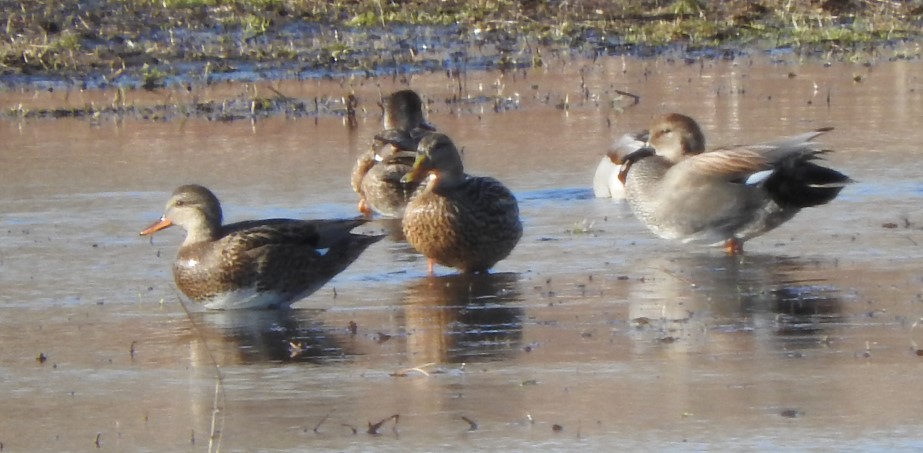Yesterday, a quick stop at a small pond in Mansfield turned up 2 gadwalls (a male and a female), 5 green-winged teals (3 males, 2 females), and a dozen mallards. The gadwalls were swimming around together, and one of the female teals was sitting close to one of the males. Given this observation, it would be tempting to report both species with breeding code P (pair) to the atlas project.
In both cases, however, this is probably a mistake. Let’s take the teals first. Although a male and a female were sitting close to one another, I did not see them interact in any way. Consequently, I have no way of knowing whether they were paired or not – they might just have been two birds that happened to choose the same spot. The gadwalls are a little trickier, because they spent the whole time I was present swimming around together. And, when I went back today, they were still there, and still moving around in unison. This is reasonably good evidence that they are in fact paired. I still would not enter them in the atlas database, however. Why? Because ducks are well known to form pair bonds on the wintering grounds or during migration. Given the date, even if these birds stay together, they could end up breeding hundreds of miles away.
It is because of situations like this, that we have established breeding “safe dates” for each species. These are dates, within which, we can be reasonably confident that records apply to birds that are truly nesting where they are observed. Obviously, if you find a nest, or some other evidence that confirms breeding, outside of the safe dates, then a record is good. But for possible and probable breeding codes, the safe dates provide a useful way to navigate trickier decisions.
Below is the “pair” of gadwalls (both facing left, notice the white speculum in their wings), which I photographed today, along with 3 mallards.
